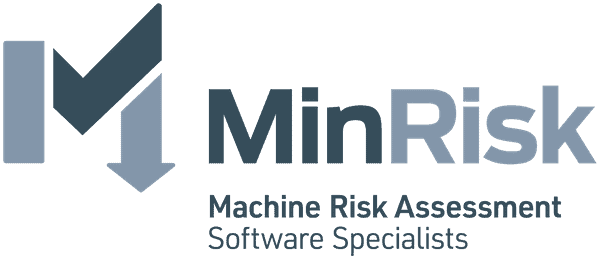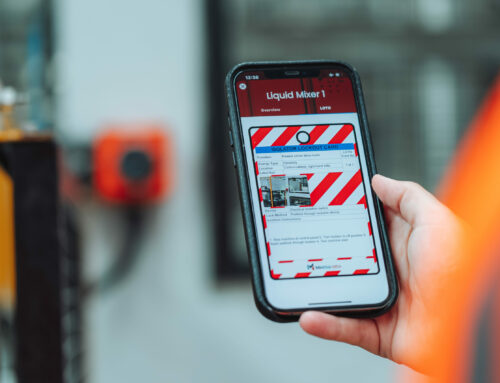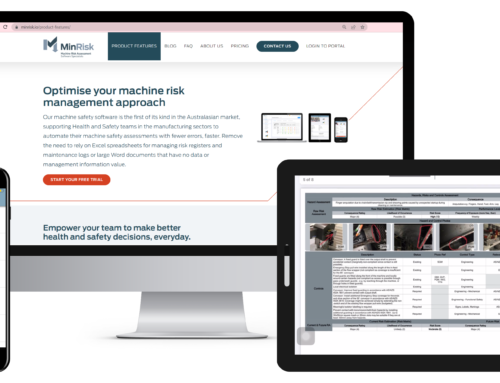We’ve sat down with MinRisk’s Chief Technology Officer, Adam Langley. He’s covered all you need to consider when choosing the right risk management software for your business, from the simplicity and usability of the software, to common security concerns.

Why is specialist risk management software important to the efficient running of your business?
Predominantly across the industry, the current risk management process is heavily reliant on multiple documents, whether printed or digital, yet businesses pay little mind to how that digital snapshot is going to evolve with changes to the physical asset, or how it can be utilised on an operational level for your wider team.
Typical risk assessment reports enable “file and forget” behaviour. That is, the risk management protocols and assessments either sit in a folder collecting dust, or in a spreadsheet primarily accessible by the management team. That’s why mobile, real time, cloud-based apps are so transformative. Everyone on your team can access and interact with them, ensuring they inform safety behaviour and protocols on site, on a daily basis.
It’s understandable that many organisations have approached machine safety, and the data management processes it demands, as an afterthought. It can feel complicated and technical – and impossible to get across the minutiae of multiple sites and complex machinery. Which is why it’s not surprising to find that this critical operational information is scattered across disparate Word documents, PDFs, Excel spreadsheets, or even printed copies manually annotated with important risk and safety information.
Without the right tools in place as you distribute authorship across a growing team of employees, you will inevitably start to experience duplicate and divergent copies of the same data. These failures will impact an organisation’s ability to stay on top of actionable risks, and communicate residual hazards to frontline staff – those that regularly use or maintain your machinery.
Digitisation is an important first step in combating operational failures in risk management because it increases the availability of data, and protects it against loss. The right risk management tool can become the single source of truth, guarding against unintentional conflict of facts, while also improving risk discoverability and transparency. Using the right automation tools, such as MinRisk can enable any team to make traction in a traditionally highly technical domain.
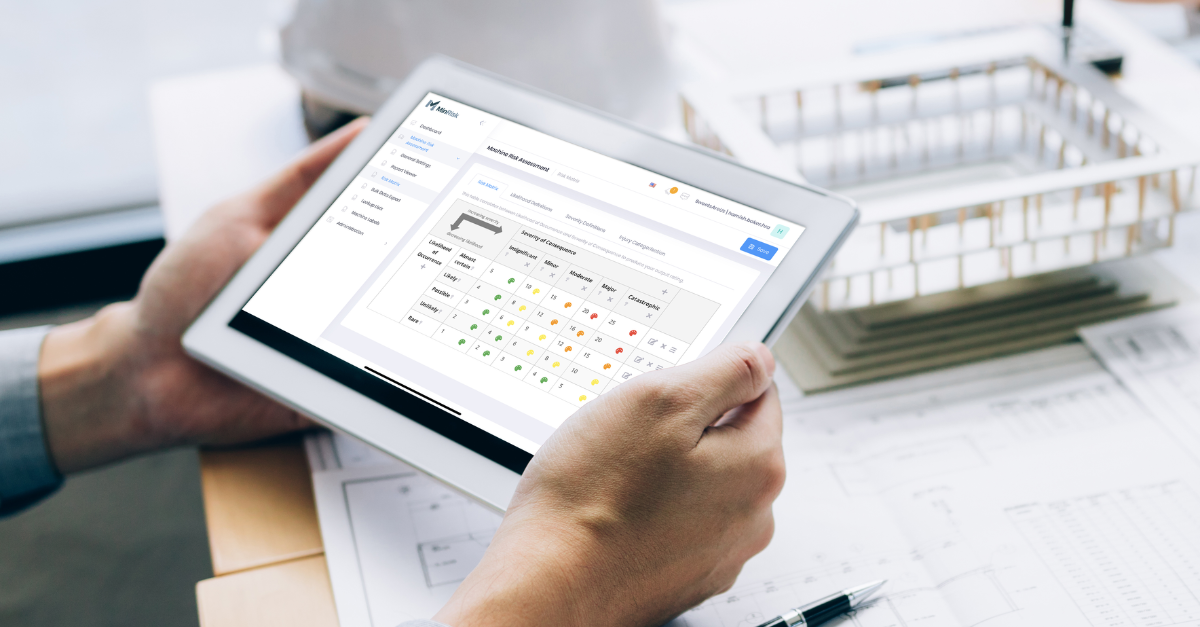

How can risk management software benefit businesses and end-users?
There are three key areas that are particularly impactful when businesses employ risk management software.
- Cost Reduction
For any industry, process automation creates efficiencies, and this is the key driver for cost reduction through using risk assessment software.
Because it is by nature collaborative, risk management software maximises human resources, allowing team members to share, collate and curate information in an operational capacity. Its democratising ability to open the domain to a team of individuals creates efficiencies, and avoids time wastage due to repeated input.
Cost benefits also come from avoiding data incidents by utilising the tool as a central pillar in the risk management programme. That means no duplicate and disparate documents, double handling, and the extra labour costs associated.
Through the discoverability features of tools, and by reducing repeated work by utilising data cloning and templating tools, the time cost of accessing data and utilising data is reduced. Your team will have the information they need at their fingertips and will be able to more efficiently use their time.
- Provable regulatory compliance
This is a key element of engaging with a risk management software product such as MinRisk. Operating your manufacturing site with effective risk management software at its core will ensure you’ll be able to demonstrate regular and consistent adherence to the latest safety processes through the software’s reporting tools.
- Improved operator safety
The software and training provided should also lead to improved operator familiarity with safety processes, because mobile, real-time, cloud-based apps make safety data utilisable on an operational basis. Everyone on your team can access and interact with live safety information and use it to inform operational safety decisions.
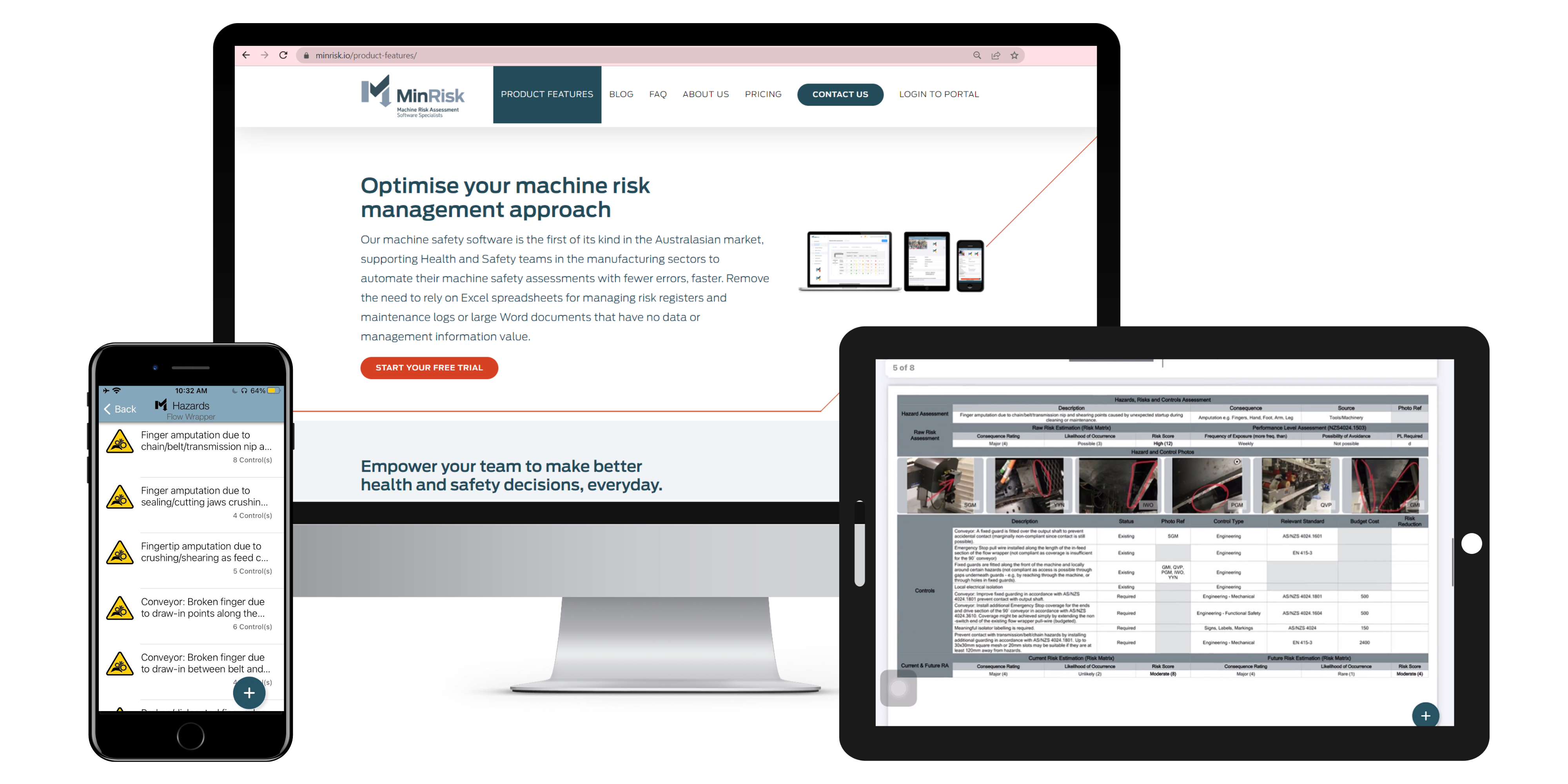
What should you consider when choosing the right risk machine risk management software for your business?
Presentation of risk information
Does your Risk Management Software have the relevant modules to take into account the specific requirements of ISO12100 or AS/NZS 4024.1201 or ISO 13849-1.
Very few software products offer this, which is why MinRisk is so relevant for manufacturing businesses globally.
I
Use on multiple operating systems
Is your risk management software usable on both Android/iOS? Or are you locked into one operating system?
A truly usable risk management software should be designed to cover specific module requirements on multiple operating systems.
Using your own device and working offline
Machine risks are out on the shop floor, so you need to be able to take your device with your software and data entry tool. Make sure also that you can work offline. These are important considerations for flexibility and ease, and take into account that many manufacturing facilities have WiFi dead spots.
Presentation of risk information
The software needs to hold value for the entire team, from operators to management. While outputs such as management reports, tables, registers will be helpful for management it may be surplus to requirements for machine operators. On the floor operators need evidence based information that can be utilised in real time.
Photos and informative content
Does the app allow informative content such as photos to be quickly and seamlessly added? For example, adding photos to a spreadsheet is cumbersome and time consuming. Make sure your risk management software allows you to upload photos and mark-up photos or make notes or comments easily.
Configured for your company’s internal risk management policy requirements
Many apps on the market only allow operation under generic policies, or require expensive add-ons or reconfiguration by specialists. Make sure that your app allows easy integration of your own company’s internal risk management policy requirements.
Complexity vs Simplicity
If you want broad use across your team you’ll want an easy to use system that doesn’t require substantial support. A complex and difficult to use system will limit the number of people who are able to operate it. If you’d like multiple users throughout your team to take advantage of the software, make sure it’s an option that doesn’t require significant training, and that its complexity doesn’t deter employees from engaging with it every day if needed.
Key security considerations that businesses should consider when selecting the right risk management tools
- Well thought-out onboarding and offboarding processes, with options to integrate with existing directory systems to reduce the risk of unauthorised access through misconfigured or unnecessary accounts.
- Security auditing – transparency of critical authentication events to support timely identification of potential incidents.
- Granular security controls – limiting access on an as-needed basis will limit exposure.
- Well documented and rigorous backup policies to protect data against accidental loss.
- Industry accepted cryptographic controls, specifically avoiding proprietary algorithms or mechanisms.
- Mechanisms for non-repudiation* of critical assets – to mitigate data tampering (by authorised persons or otherwise).
*Assurance that the sender of information is provided with proof of delivery and the recipient is provided with proof of the sender’s identity, so neither can later deny having processed the information.
MinRisk
Our machine risk management software MinRisk is the first of its kind in the Australasian market, supporting Health and Safety teams in the manufacturing sector to automate their machine safety assessments. In the checklist below we’ve outlined all the features that make MinRisk the right choice for your risk assessment software.
|
Want to explore the benefits of MinRisk further? Reach out to us today! We can walk you through the process of onboarding MinRisk into your safety programmes, discuss costs including options for add-ons like e-LOTO cards, and support you with best practice approaches for onboarding your team.
